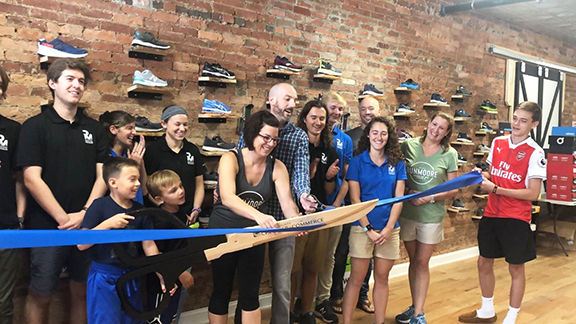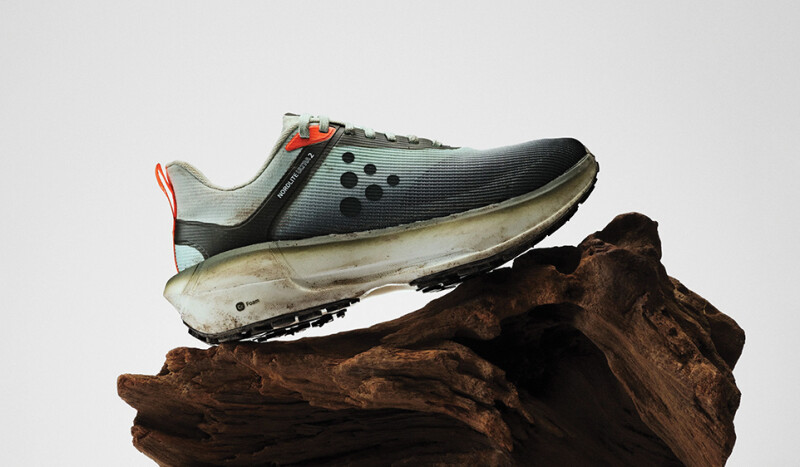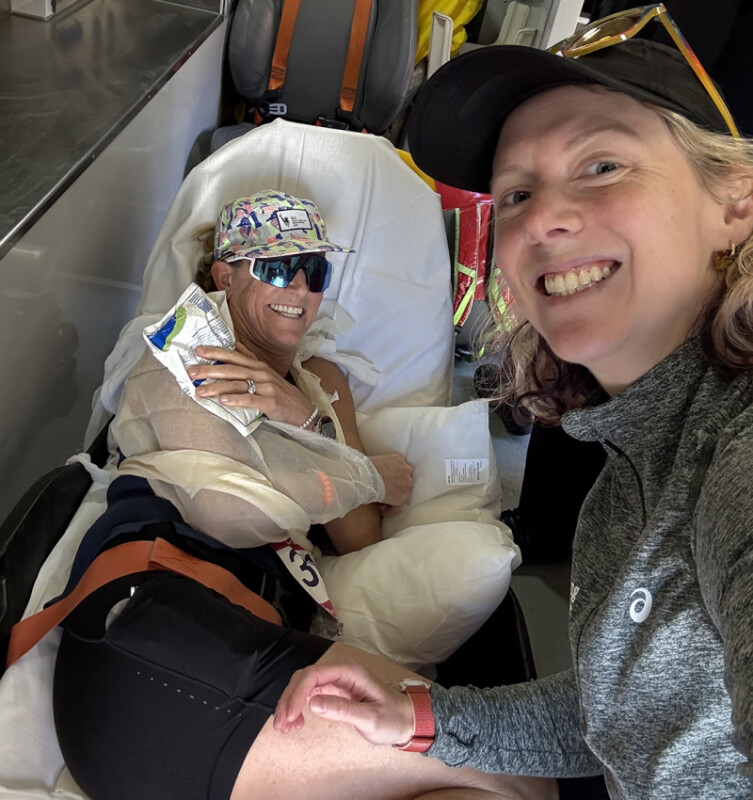The moment could’ve easily passed over Tom Vladimir’s head.
Walking down the hallway of the Boca Raton Resort and Club with his friend and resort president John Tolbert, Vladimir observed Tolbert bend down and pick up small pieces of paper littering the carpet.
It was a simple, modest act, of course, but one that has remained etched in Vladimir’s mind. Tolbert, a suited-up executive who oversaw a resort boasting annual revenue of more than $200 million, didn’t pass over the menial task or assign it to any one of the resort’s 1200 staff members, but rather immediately handled it himself.
“It’s that attention to detail that comes from the top which has always stuck in my mind,” says Vladimir, head of the Runner’s Edge in Boca Raton, FL. “I believe the best leaders aren’t afraid to set an example and expect their staff to show the same attitude that nothing is beneath them or their pay grade.”
As Vladimir can attest, ideas for a stronger run specialty store can come from the most unlikely, seemingly unrelated of places. Whether it’s tangible marketing ideas or customer service philosophies, running retailers can draw inspiration and lessons from the retail and hospitality operations around them.
So, What Would Eddie Do?
In his early 20s, Steve Moore worked for an entrepreneurial Maryland restaurateur named Eddie Dopkin. One evening, Moore watched Dopkin visit tables at his upscale restaurant. A female customer mentioned that she loved his breakfast joint across the street, largely because it was the only place she could find that carried Stevia. Moments later, Moore watched Dopkin sneak across the street, open his breakfast spot and return with two packets of Stevia for the woman’s iced tea.
“This wasn’t asked for or even warranted, but Eddie did it anyway,” Moore recalls. “That always struck me because it wasn’t only going above and beyond, but going above and beyond when it wasn’t even expected.”
At Run Moore, his Westminster, MD-based running store, Moore has since adopted the “What would Eddie do?” refrain as a rallying cry for superior customer service.
Giving Out Advice
In one recent instance, Moore says a customer entered seeking nutrition for her first 10k race, subtly mentioning a recent IT strain. Staff members immediately jumped in with exercises, tips and other suggestions to address the pain.
“It’s easy when someone says something in passing to just ignore it. After all, she didn’t come in for that reason,” Moore says. “She left, though, with a lot more knowledge and I’m betting we’ll see her again.”
After visiting a local high school program with staff from Run N Fun, her Minneapolis-based running store, Kari Bach and her team settled in for dinner at a local eatery. The restaurant’s owner was touching tables across the dining room when he stopped at Bach’s group and asked if this was their first visit. As it was, Bach said so and the owner welcomed them. He later returned with a gift card for a future visit, a movie card and a salt-and-pepper shaker set.
Sock It To Them
“This wasn’t something advertised at all, but a really smart idea that showed he cared and valued our business,” Bach says.
Impressed by the act, Bach has since instituted a similar practice at Run N Fun, dispensing complimentary socks to first-time customers and inviting them to return to Run N Fun again. Bach says the simple, unexpected effort, one designed to heighten customer loyalty and counter future online purchases, seems to genuinely impress customers.
“It shows them we’re willing to take those extra steps to earn their business time and time again,” she says
Doing Right for the Customer
At 5’6”, Bob Dyer struggled to find well-fitting apparel, especially formal attire like the suits and dress shirts required for his past life in the corporate world. That’s why Dyer became such a loyal, decades-long customer of Sam Cavato Men’s Wear near St. Louis.
While the store didn’t have a bevy of options in Dyer’s size, Sam Cavato’s staff never sold Dyer on compromises or accepted dead ends, even calling Dyer when new product arrived that might suit his slight frame.
“They never tried to sell Bob on something that didn’t fit him or to convince him to wear something bigger,” recalls Dyer’s wife, Jennifer Henderson. “They looked at the long-range relationship and doing right by us.”
Dyer and Henderson have since brought that same attitude to Running Niche, the St. Louis running store the couple opened in Spring 2018. If a customer falls out of the norm – someone who needs a 4E shoe or a size J bra, for instance – neither Dyer nor Henderson push a subpar alternative. Rather, they’ll introduce proper solutions, which might include a special order or even sending the customer to a competitor with a deeper array of on-hand options.
“Ultimately, we want them to be runners and to give them an experience rooted in their best interests,” Henderson says.
Years ago, Susie Stein, owner of the two-store Up and Running chain in Dayton, OH, read a story she refers to as the “pink pen.” A couple went out to dinner at a high-end restaurant, Stein retells, and the night featured impeccable food and service.
Honoring the Process
“Treated like a queen and king,” Stein says. “Everything to the nines.”
At the meal’s conclusion, the waiter brought over the folio, which held the bill, the customer’s credit card and a pink-feathered pen far more suited for a corner diner than a five-star restaurant. For Stein, the story underscored the importance of minding the details and delivering a top-notch experience from beginning to end.
“In this case, that cheesy pink pen was the last thing the couple remembered about the restaurant,” she says.
The “pink pen” lesson is one Stein relays to her Up and Running staff often. In fact, the last step in the store’s sales process calls for associates to “notice [the customer’s] eyes.” It’s a reminder to see the process through to the very end, which might include shaking hands after handing customers their bagged product or walking the customer to the door.
“We talk about not just taking their money and letting them leave,” Stein says, “but rather continuing to engage them and putting an exclamation point on their experience in our store.”







